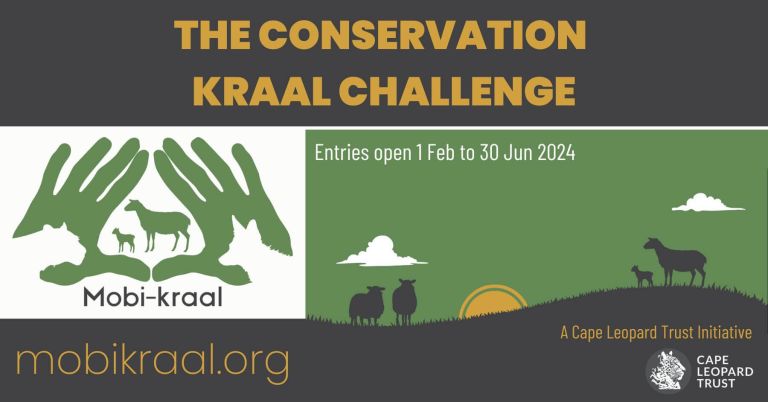To date, much of the Cape Leopard Trust's research has taken place primarily in the Cederberg Mountains. Further projects have now been established in the Swartberg/Gamka Corridor as well as in the Boland region of South Africa.
These projects aim to further our understanding of leopard ecology and behaviour, and to reduce human-wildlife conflict which has persecuted the species for centuries.
Why the leopard?
The leopard currently fills the role of apex predator in the Western Cape; however, its conservation status remains uncertain. The species was regularly removed or exterminated from farms with little knowledge of population or genetic status, whether these removals are sustainable or whether the factors giving rise to conflict are established.
Studies show that leopards in the Cape differ morphologically as well as genetically from leopards elsewhere in southern Africa. Leopard home ranges in our study areas may be as much as 10 times larger than those reported in earlier research, illustrating that population numbers are far smaller than previously estimated.
Cape Mountain Leopards
Before the pioneering work undertaken by the Cape Leopard Trust, very little was known about the behaviour and ecology of the Cape Mountain Leopard. Presented below are some interesting facts about the Cape mountain leopards found in our project areas.
Some general facts on Cape mountain leopards:
- Cape leopards live in the mountains regions of the Cape
- They like rocky slopes or well vegetated riverine areas rather than open, flat areas
- Each leopard has unique spot or rosette patterns
- They move mainly at night but also a little in the day.
- A leopard call sounds like sawing wood
- Leopards are solitary, moving within a well-defined, sexually exclusive territory or home range. They do not live in one cave as some believe, rather they find suitable places to sleep as they go
How big are Cape leopard's territories?
- Male home range in Fynbos average 250㎢
- Male home range in Karoo average 600㎢
- Female home range average 120㎢
- Within a male's home range there will be two or three females
What do leopard tracks look like?
- No nails (it's a cat)
- Three bulges on back of pad (it's a cat)
- Male length in Cederberg = 7,5cm – 8,5cm
- Female length in Cederberg = 6cm – 6,5cm
What do Cape leopards eat?
- Favourite foods are klipspringer and dassie (almost 80% of their diet)
- They also eat other antelope, porcupine and mice
- Very few baboons are eaten as these group-living animals can be very dangerous
How much does a Cape leopard weight?
- Cape mountain leopards are half the mass of the average African savanna leopards
- Males in Cederberg average 35kg
- Females in Cederberg average 21kg
What is the Cape Leopard's breeding behaviour?
- Mothers have 2 or 3 cubs (less than half survive)
- The female moves them to a new den site every 7 to 10 days for about 3 months
- Cubs leave their mother after 12 -18 months
How many Cape leopard are there left?
- A good guesstimate would be that there are less than 1000 Cape leopards in total
- About 35 resident adult leopards live in the greater Cederberg area (from Pakhuis pass to Katbakkies in the Bokkeveld)
Leopard research in the Cederberg project area
Research on the ecology of leopards in the Cederberg has been ongoing since 2003. For nearly a decade the Cape Leopard Trust has been exploring the mountains in this project area to further understand these elusive cats. For more on the leopard research undertaken in the Cederberg, click here.
Leopard research in the Boland project area
Although only started in 2010, the Boland Leopard Project has grown from strength to strength, and has achieved remarkable success. To date, more than 50 leopards have been photographed, suggesting that the big cat population in this area could be healthy. For more work done on Boland leopards, click here.
Leopard research in the Gouritz project area
The Gouritz project was initiated in 2007, using camera traps to survey leopards in the Little Karoo. The data obtained thus far has provided information on home ranges, population density, habitat use and diet, all of which are important aspects of the ecology of leopards in the region. For information on the Gouritz leopard project, click here.
Get involved
The research conducted by the Cape Leopard Trust is heavily reliant on donations and sponsorships from individuals, companies and charitable organisations. We have a small dedicated team who are passionate about the research and conservation of leopards in the Cape. Should you wish to see the wish lists for the various projects, or make a donation to the Cape Leopard Trust, please click here.


















